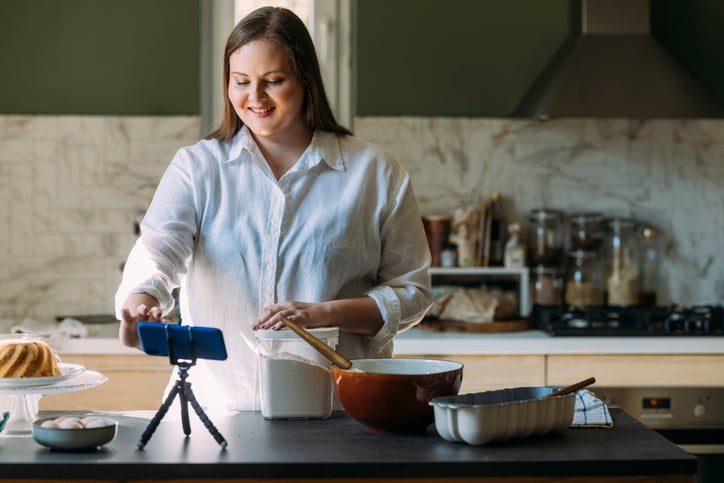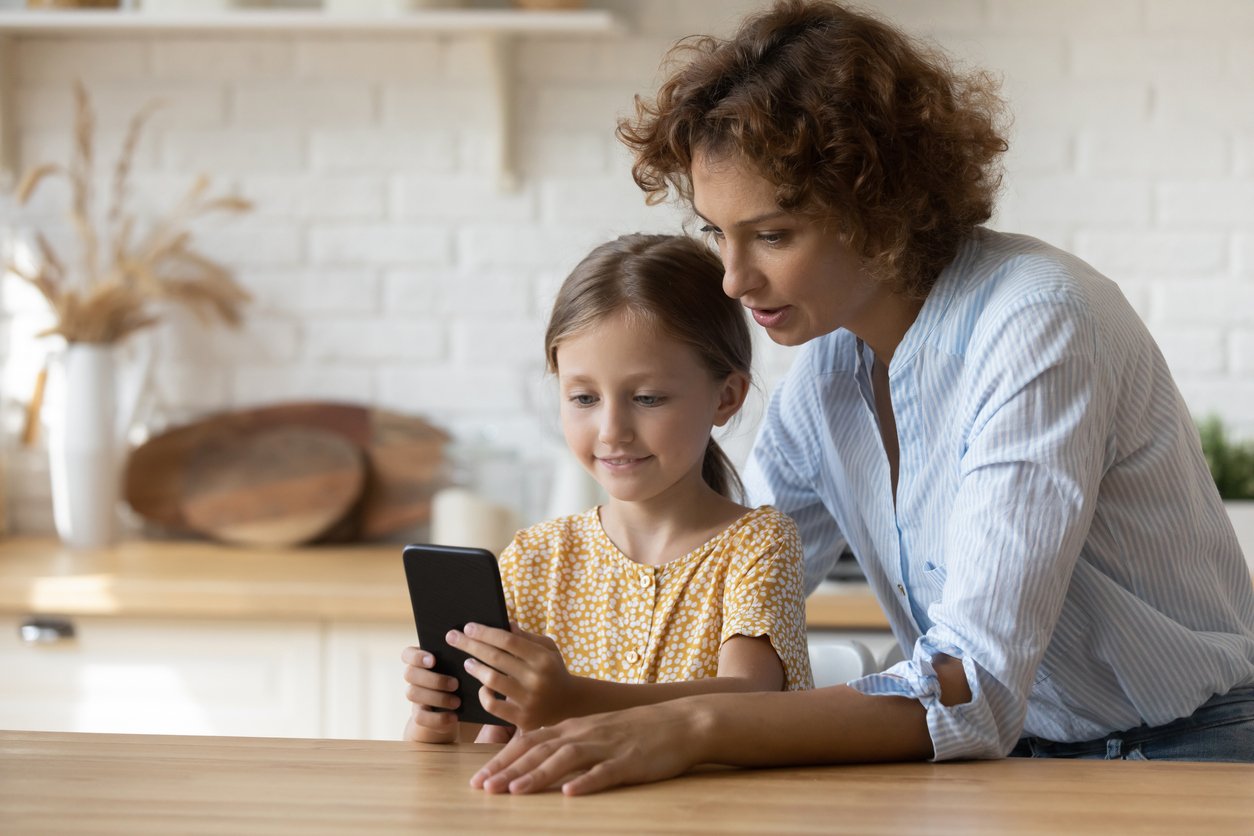How to Use Video Modeling and Video Self-Modeling to Help Your Autistic Child
Have you ever wondered how we learn new skills–or how most children seem to pick up on the natural progression of getting a haircut, going to the dentist, or brushing their teeth? While many children grasp the typical flow of these activities and automatically learn from watching others, autistic children may require more direct instruction and modeling to better understand the natural progression of routine activities. Each step along the way can be mapped out, demonstrated, and role-played to give children on the spectrum an opportunity to learn, better understand, and conceptualize these skills.
Video Modeling vs. Video Self-Modeling
Direct instruction of daily living skills can be accomplished through a technique called “video modeling.” Using this approach, students can learn about visiting the dentist, brushing their teeth, washing their hands, and getting a haircut by watching a pre-recorded version of the activity, skill, or event as it takes place.
Video modeling and video self-modeling are two slightly different forms of the same thing. Video modeling uses a person other than the autistic child to role-play the activity being demonstrated through video learning; however, video self-modeling records the child performing the skill, event, or activity (such as brushing their teeth). The child then watches the playback and can learn from any steps they did well, left out, or could improve on.
According to Cooper, Heron, and Heward (2020), video self-modeling is “a specific application of video modeling that allows the individual to imitate targeted behaviors by observing [themselves] successfully performing the behavior.”1 Both video modeling and video self-modeling are effective methods for guiding autistic children in the successful completion of daily skills and activities.
Because video modeling is an evidence-based practice, it is effective and easy to implement with individuals of all ages, stages, and developmental levels. Parents, therapists, and educators alike can benefit from including this strategy in the academic, social, and vocational realms when working with autistic children.2 Autistic learners begin to grasp the progression of the various steps in a task or activity by watching a recorded version of the skill. When they are finished viewing the recording, practice sessions take place, giving the child an opportunity to use the skill on their own and implement any necessary steps for task completion along the way.
Steps for Implementing Video Modeling
As noted above, both video modeling and video self-modeling are straightforward processes that can be implemented by parents, teachers, therapists, and educators across a wide variety of settings–such as at school, in the clinic, and at home. Easy steps to follow for implementing this approach include:
- Targeting a behavior for acquisition
- Using the right equipment
- Collecting pre-treatment data and establishing mastery criteria
- Recording the video
- Arranging the environment for watching the video
- Monitoring progress and fading out the intervention

1. Targeting a behavior for acquisition
The first step in the process of effective video modeling is to identify a behavioral goal, self-care skill, or task for the child to learn. This can include things like going to the dentist, brushing one’s hair, washing hands, or getting a haircut. Once a skill, activity, or task is selected, it should be defined in a way that can be objectively measured.
If hand washing is selected, an objective definition will include measurable values that can be easily charted, graphed, noted, and tracked over time. An objective definition of hand washing might sound like this: Sarah will wash her hands for 30 seconds by singing the letters of the alphabet each time she goes to the bathroom. Steps required for completing the task from start to finish should be mapped out in the video modeling example.
2. Using the right equipment
The equipment used to film video recordings does not need to be elaborate, high-end, or professional. Using your phone camera–along with an area with limited background noise and busyness–is a great place to start!
The following video explains how to make effective recordings of video models and describes several factors to consider when preparing to film: How to Make Video Models for Children with Autism--Teaching Materials.
3. Collecting pre-treatment data and establishing mastery criteria
It is important to collect pre-treatment (or baseline) data before implementing video modeling strategies.4 Baseline data can be easily collected by assessing the child’s existing knowledge and skill repertoire before using video modeling as a teaching strategy for skill development. Make note of any steps the child already knows how to do on their own and keep track of any prompting that is necessary for task completion. Set mastery criteria by determining the total number of steps the student should complete independently by the end of the intervention.
In the hand-washing example, baseline data could look like this: Sarah turns on the water, gets soap, scrubs her hands, and rinses independently, but she requires light prompting (in the form of a verbal reminder) to turn off the water, dry her hands, and throw away the paper towel before leaving the bathroom. Sarah currently completes 4 of the 7 total steps required for task completion without assistance. The final goal (or mastery criteria) is for her to complete all steps (7 out of 7) independently. Video modeling will be used as a strategy to aid in skill acquisition.

4. Recording the video
Next, consider whether or not the learner can already complete part of the skill, goal, task, or activity for acquisition on their own. If the learner can complete part of the skill independently, video self-modeling might be the best approach; however, if the child does not have the task in their skill repertoire (i.e., does not know how to do the skill), then video modeling with someone else as the model would be the best choice.3
For basic video modeling, get the model who will be performing the task or activity prepared to be recorded. A script can be followed for more complex skills. Video the child or role model performing the activity, skill, goal, task, or behavior, and edit out any errors made or prompts given.4 Voiceover or closed captioning can be included in the final video if needed.
5. Arranging the environment for watching the video
Set up a place for the child to watch the recording of the video model, and consider the following:3
- How often will the video be shown?
- When will opportunities for practicing the skill take place?
While the child watches the video recording, make sure they are paying attention to each of the different steps. Pause the video along the way if the learner has any questions–or if they are not following along or are confused.
6. Monitoring progress and fading out the intervention
Monitor the child’s progress on the skill, task, behavior, or activity by comparing pre-treatment data with post-treatment data. Post-treatment data should be collected after the video modeling procedure has been implemented, and data should also be collected while the strategy is being conducted. In this way, the child’s progress can be compared to levels before, during, and after the intervention is implemented.
Collecting data during and after the intervention is similar to collecting pre-treatment data (described in Step 3). Take note of the number of steps the child completes on their own after watching the video recording a predetermined number of times.
To fade out the video modeling intervention and any prompts used along the way, slowly reduce the number of times the child watches the recording each week.3&4 Use error correction strategies to correct any mistakes that are made (such as forgetting to throw away the paper towel after hand washing). The final goal is to have the child engage in the skill, goal, or activity independently–without the need for prompting, error correction, or the video model.

Using Social Narratives for Video Modeling
Social narratives can be used as scripts when creating video models. By providing easy-to-follow directions in written form, social narratives can be easily reformatted into a video and implemented as a model for individuals on the spectrum to learn from. Social narratives and video modeling are appropriate for teaching daily living skills, tasks, goals, and activities such as going to the dentist, following rules, washing hands, going to the doctor, and more!
Take a look at our suggested list of the 10 best video modeling examples for autistic children!
Have you used video modeling effectively for teaching new skills to an autistic child?
References
- Cooper, John O., Timothy E. Heron, and William L. Heward. Applied Behavior Analysis. 3rd ed. Hoboken, NJ: Pearson, 2020.
- https://www.iidc.indiana.edu/irca/articles/video-self-modeling.html
- https://csesa.fpg.unc.edu/sites/csesa.fpg.unc.edu/files/ebpbriefs/VideoModeling_Steps_0.pdf
- https://hussmanautism.org/implement-video-modeling/
- https://journals.sagepub.com/doi/10.2511/027494813807714555

Kenna McEvoy
Kenna has a background working with children on the autism spectrum and enjoys supporting, encouraging, and motivating others to reach their full potential. She holds a bachelor's degree with graduate-level coursework in applied behavior analysis and autism spectrum disorders. During her experience as a direct therapist for children on the autism spectrum, she developed a passion for advocating for the health and well-being of those she serves in the areas of behavior change, parenting, education, and medical/mental health.




